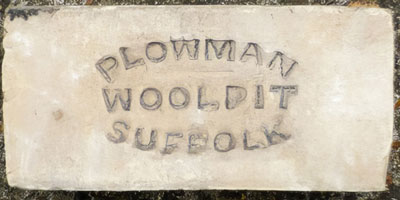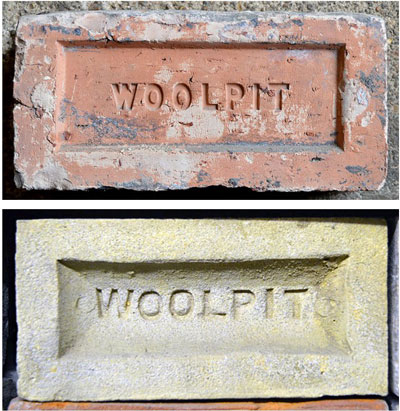The largest and best known of Woolpit brickyards, with eye witness reports from the late 1930s.
In 1937 to 1939 there were three Hoffman type kilns in use, producing both red and white bricks, although at this time very few whites were made. A steam driven pug mill processed the clay, which was moulded into bricks by hand and also by a Berry type brick making machine. Bricks took a week to dry on steam heated floors, or in summer they might be dried on the outdoor hakes.
There were about 40 staff, of whom 12 were hand moulders, 12 were in the clay pits, 5 on the kilns, 3 on the Berry machine, and 5 or 6 lads. Only one of the hand moulders worked on white bricks.
In 1939 or 1940 the works was requisitioned and closed for the duration of the war.
The brickworks reopened in 1946, but there were no more hand mouldings made and all bricks were now machine made. There were now only 20 or 22 staff, of whome there were 9 brickmakers, 8 clay diggers, 2 brick burners and 2 boilermen. Three brick machines had 3 men each, producing 8000 bricks a day per machine. All production was now red bricks only, with no special mouldings at all. Only two kilns were in use.
This brickworks closed in 1948.




